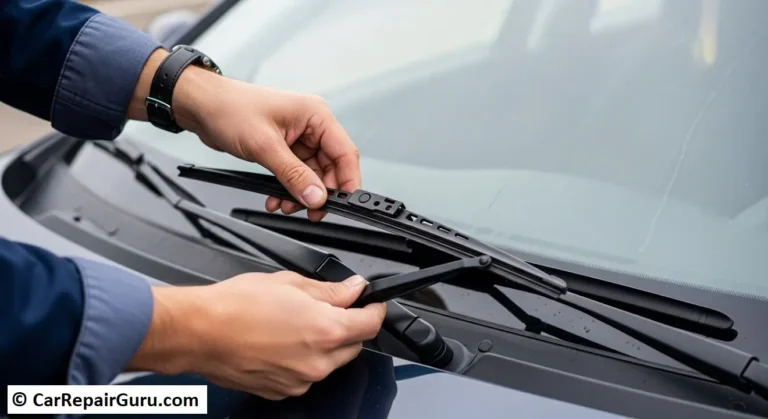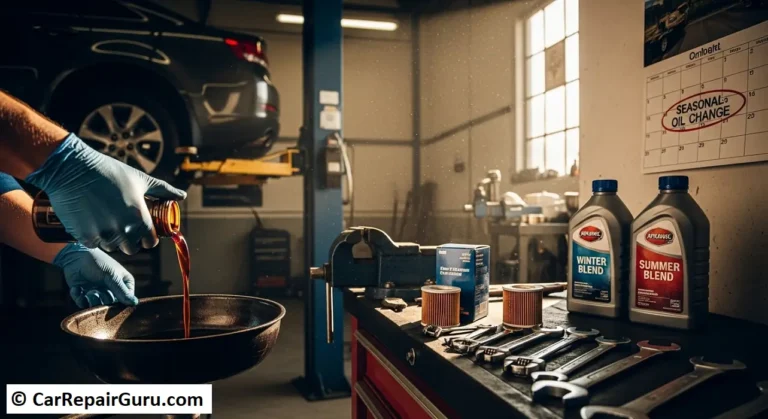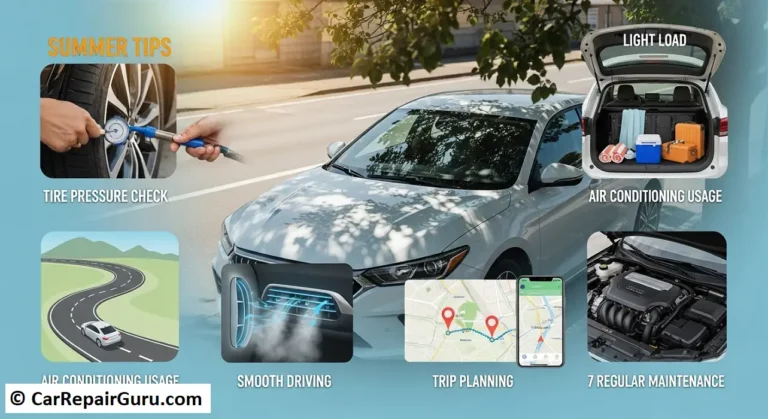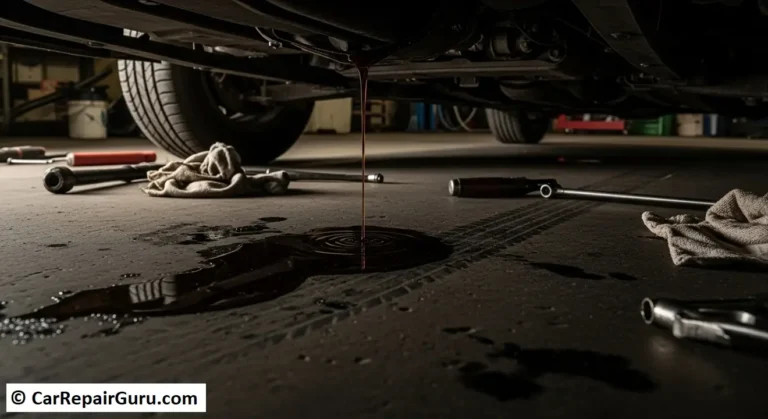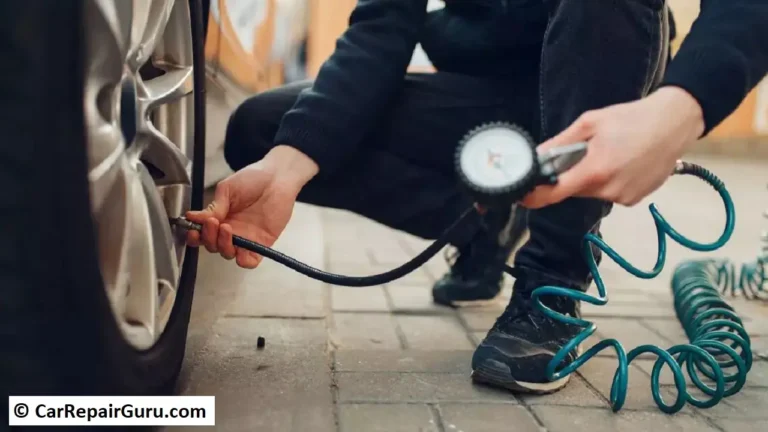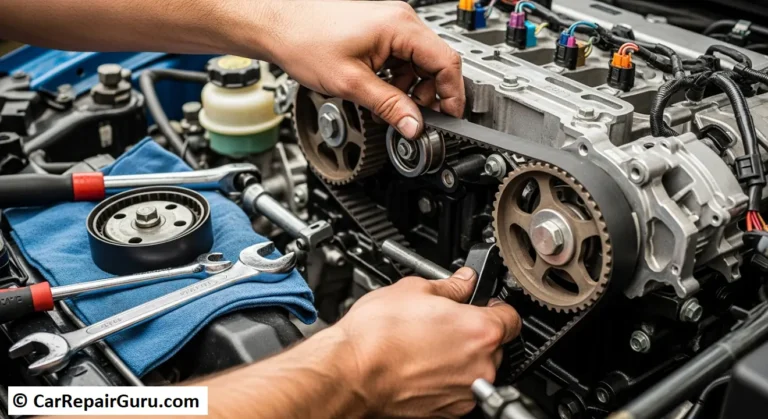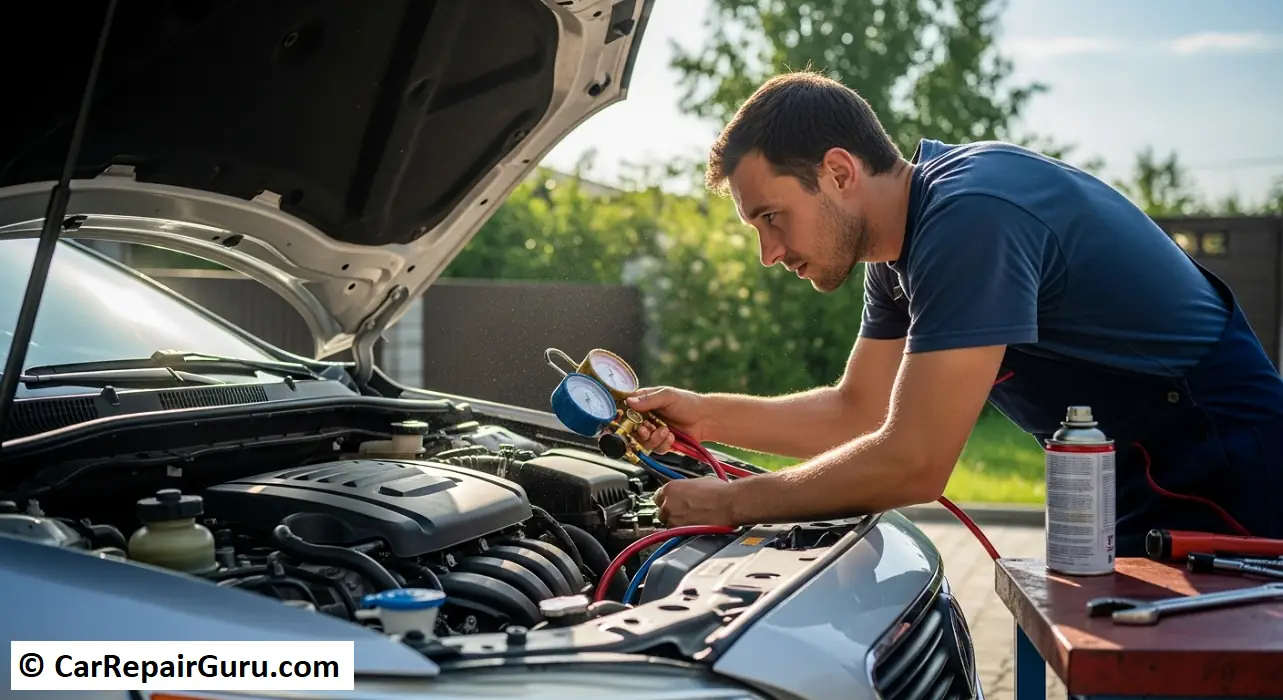
Summer is practically here. You can almost smell the sunscreen and taste the barbecue. It’s the season of open roads, spontaneous beach trips, and unforgettable adventures. But while you’re dreaming of your destination, your car is facing its biggest challenge of the year: the heat.
Intense summer temperatures can be brutal on a vehicle, stressing everything from the engine and battery to the tires and A/C. A minor issue that was unnoticeable in the spring can quickly become a major breakdown on a scorching July afternoon.
That’s where we come in. This is your complete guide to prepare your car for summer. Forget the stress and uncertainty. Following this comprehensive checklist for summer car maintenance will ensure your vehicle is safe, reliable, and ready to handle whatever the heat throws at it, keeping your summer plans on track.
Quick View: Your Essential Summer Car Care Checklist
In a hurry? Here’s the short version of our top car care tips for summer. We’ll dive into the details of each point below.
- Cooling System & A/C Check: The #1 defense against car overheating.
- Tire & Brake Inspection: Your connection to the hot pavement.
- Battery & Fluid Levels: The lifeblood and power source of your vehicle.
- Visibility Systems: Wipers, lights, and clean glass for summer storms and sun glare.
- Exterior & Interior Protection: Shielding your car from harsh UV rays.
- Boost Summer Fuel Economy: Save money at the pump during peak driving season.
- The Pre-Road Trip Deep Dive: A final check before you hit the highway.
- Summer Emergency Preparedness: What to pack and what to do if you break down.
1. Check Your Cooling System & A/C
If you only do one thing on this list, make it this. Your car’s cooling system works overtime in the summer. A failure here is the leading cause of roadside breakdowns and can lead to catastrophic engine damage.
Inspect the Radiator and Coolant (Antifreeze)
Your engine generates an incredible amount of heat, and the coolant (also called antifreeze) is what absorbs it and keeps the engine from melting down. First, and this is crucial, only check the coolant when the engine is completely cool. Open the hood and locate the coolant reservoir (usually a semi-transparent plastic tank). The fluid level should be between the “MIN” and “MAX” lines. While you’re there, visually inspect the radiator hoses for any cracks, bulges, or leaks. If the fluid is low or looks rusty and sludgy, it’s time for a top-off or a professional coolant flush.
Test Your Air Conditioning (A/C)
A working A/C is about more than just comfort; it’s a key part of summer driving safety, reducing driver fatigue on long, hot trips. Turn your A/C to the highest fan speed and coldest setting. Does it blow frigid air within a minute or two? If your car A/C not cold enough, it could be low on refrigerant, which often signals a leak that a mechanic should inspect. If you notice a musty, gym-sock smell, it’s a tell-tale sign that your cabin air filter is clogged with dust and mold and needs to be replaced—an easy and inexpensive fix.
2. Under Pressure: Tires and Brakes
Hot asphalt can reach temperatures well over 120°F (50°C), which puts immense stress on your tires. Combined with sudden summer thunderstorms that make roads slick, your tires and brakes are your most critical safety features.
Master Your Tire Pressure & Tread
Heat causes the air inside your tires to expand, which is why checking tire pressure in hot weather is so important. For an accurate reading, always check the pressure in the morning before you’ve driven, when the tires are cold. You can find the correct PSI (pounds per square inch) for your vehicle on the sticker inside the driver’s side door jamb—do not use the number printed on the tire sidewall. For tread depth, use the classic penny test: insert a penny into the tread with Lincoln’s head upside down. If you can see all of his head, your tread is dangerously low and it’s time for new tires.
Don’t Ignore Your Brakes
Your brakes are your first line of defense. Pay attention to how they feel and sound. Are you hearing a high-pitched squeal when you stop? A grinding noise? Do you feel a vibration or pulsation in the brake pedal? These are all signs that your brake pads or rotors are worn and need a professional inspection before you embark on any long drives.
3. Power Up: Battery and Fluids
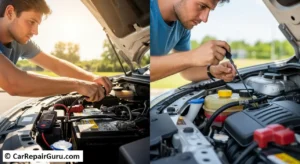
While we often associate battery problems with winter, high heat is actually a battery’s worst enemy. It accelerates the chemical reactions inside, causing fluid to evaporate and leading to internal damage that can leave you stranded.
Test Your Car Battery
If your car battery is more than three years old, it’s living on borrowed time, especially in a hot climate. Pop the hood and look at the battery terminals. If you see a white or blueish, crusty substance (corrosion), clean it off with a wire brush. For peace of mind, drive to any major auto parts store; most offer free battery testing that can tell you how much life your battery has left. It’s better to replace it on your own terms than to have it die in a crowded parking lot.
Check All Your Vital Fluids
Your car relies on several fluids to run smoothly. Take five minutes to check them:
- Engine Oil: Pull the dipstick, wipe it clean, reinsert it, and pull it out again. The level should be in the cross-hatched area, and the oil should be amber-colored. If it’s dark black and gritty, you’re due for an oil change.
- Windshield Washer Fluid: Summer means bugs. Lots of them. A full reservoir of washer fluid is essential for maintaining visibility. Consider using a formula specifically designed to break down bug splatter.
4.Wipers, Lights, and Windshield Care
Between blinding sun glare and sudden, torrential thunderstorms, clear visibility is non-negotiable for summer driving safety.
Replace Worn or Brittle Wiper Blades
The sun’s intense UV rays bake the rubber on your wipers, causing them to crack and harden. The first time you need them in a downpour, they’ll just smear water across your windshield instead of clearing it. Replacing wiper blades is an inexpensive and simple piece of maintenance that makes a world of difference.
Inspect Your Windshield for Chips and Cracks
Have a small rock chip in your windshield? Get it fixed now. The extreme heat of a car sitting in the sun can cause the glass to expand, turning that tiny, ignored chip into a giant crack running across your line of sight overnight. A small resin repair is much cheaper than a full windshield replacement.
Test All Exterior Lights
Have a friend or family member help you do a quick walk-around. Turn on your headlights, then check your turn signals, brake lights, and reverse lights to make sure everything is working.
5. Protect and Preserve: Interior and Exterior Care
The sun doesn’t just make your car hot; it actively damages it. UV radiation fades your paint, cracks your dashboard, and degrades plastic trim. Think of this step as applying sunscreen for your car.
Shield Your Interior from Sun Damage
Your car’s interior can reach dangerous temperatures in minutes. A high-quality, reflective sunshade is your best defense. It can significantly lower the interior temperature and, more importantly, provides UV protection to prevent your dashboard from cracking and fading. Seat covers and applying an interior protectant to plastic and vinyl surfaces also add a crucial layer of defense.
Give Your Car a Coat of Armor (Wash and Wax)
A thorough wash removes corrosive elements like bird droppings and dead bugs. But the most important step is applying a coat of wax. A good wax doesn’t just make your car shiny; it creates a protective barrier against the sun’s harmful UV rays, just like sunscreen for your skin.
6. Improve Summer Fuel Economy and Save at the Pump
With more driving and the A/C blasting, you’ll notice your gas tank emptying faster. A few simple habits can help you improve gas mileage.
Lighten Your Load
Are you still hauling around winter gear, sports equipment, or heavy tools in your trunk? Extra weight makes your engine work harder, burning more fuel. Take a few minutes to clear out any unnecessary items.
Use Your A/C Strategically
Here’s a tip that settles the age-old debate. On the highway (at speeds over 45-50 mph), it’s more fuel-efficient to use your A/C than to roll down the windows. Open windows create significant aerodynamic drag that forces your engine to burn more fuel. In stop-and-go city traffic, the opposite is true—feel free to roll them down.
Avoid Idling and Plan Your Route
An idling car gets zero miles per gallon. If you’re going to be parked for more than a minute, it’s better to turn the engine off. Before you leave, bundle your errands into a single, efficient trip to reduce overall mileage.
7. What to Do If You Break Down in the Heat: A Safety Guide

Even with perfect preparation, things can go wrong. Knowing what to do if your car breaks down is a critical part of summer safety.
Step 1: Get to a Safe Location
The moment you suspect a problem (like the temperature gauge soaring into the red), signal and move to the right shoulder. Pull over as far as you safely can, giving plenty of room between you and traffic. Turn on your hazard lights immediately.
Step 2: Stay Cool and Visible
Your safety is the priority. If you can do so without walking into traffic, exit the vehicle from the passenger side and stand a safe distance away, behind a guardrail if possible. Staying in a hot, non-running car is dangerous.
Step 3: Call for Help
This is when preparation pays off. Have the number for your roadside assistance provider (like AAA) saved in your phone. Be ready to tell them your location as precisely as possible.
8. The Ultimate Summer Road Trip Emergency Kit
Your standard emergency kit is a great start, but a summer road trip car checklist requires a few extra items to combat the heat.
- The Basics: Jumper cables, a first-aid kit, a flashlight with extra batteries, and a basic tool kit.
- Summer Must-Haves:
- Extra Water: Pack more than you think you need. Some for drinking, and a gallon for the radiator in a true overheating emergency.
- A Portable, Battery-Operated Fan: A lifesaver if you’re stuck waiting for a tow truck.
- Sunscreen and a Hat: To protect yourself if you have to be outside the vehicle.
- A Fully Charged Power Bank: To ensure your phone doesn’t die when you need it most.
- Extra Coolant: A small bottle of the correct type of coolant for your car.
Drive Confidently This Summer
There you have it—your complete guide to getting your car ready for the sun and heat. By investing just a little bit of time in this summer car maintenance checklist, you’re not just taking care of your vehicle; you’re ensuring a season of safe, stress-free driving. You can hit the road with confidence, knowing you’ve done everything you can to prevent a breakdown from derailing your summer fun.
Frequently Asked Questions
Can I use summer tires all year round?
It’s not recommended. Summer tires use a compound that provides excellent grip on hot, dry, and wet roads, but it becomes hard and brittle in cold temperatures, drastically reducing traction.
What are the first signs my car is about to overheat?
The most obvious sign is your dashboard temperature gauge climbing into the red zone. You may also notice a sweet, syrupy smell (leaking coolant) or see steam coming from under the hood. If you see any of these, pull over immediately.
Is it better to use the A/C or open my windows for fuel economy?
At highway speeds (above 45-50 mph), use your A/C. The aerodynamic drag from open windows uses more fuel. In slower, city driving, opening your windows is generally more efficient.
How do I get rid of the musty smell from my A/C?
That smell is almost always caused by a dirty, damp cabin air filter. Replacing it is a simple, 15-minute job on most cars and will immediately solve the problem.
